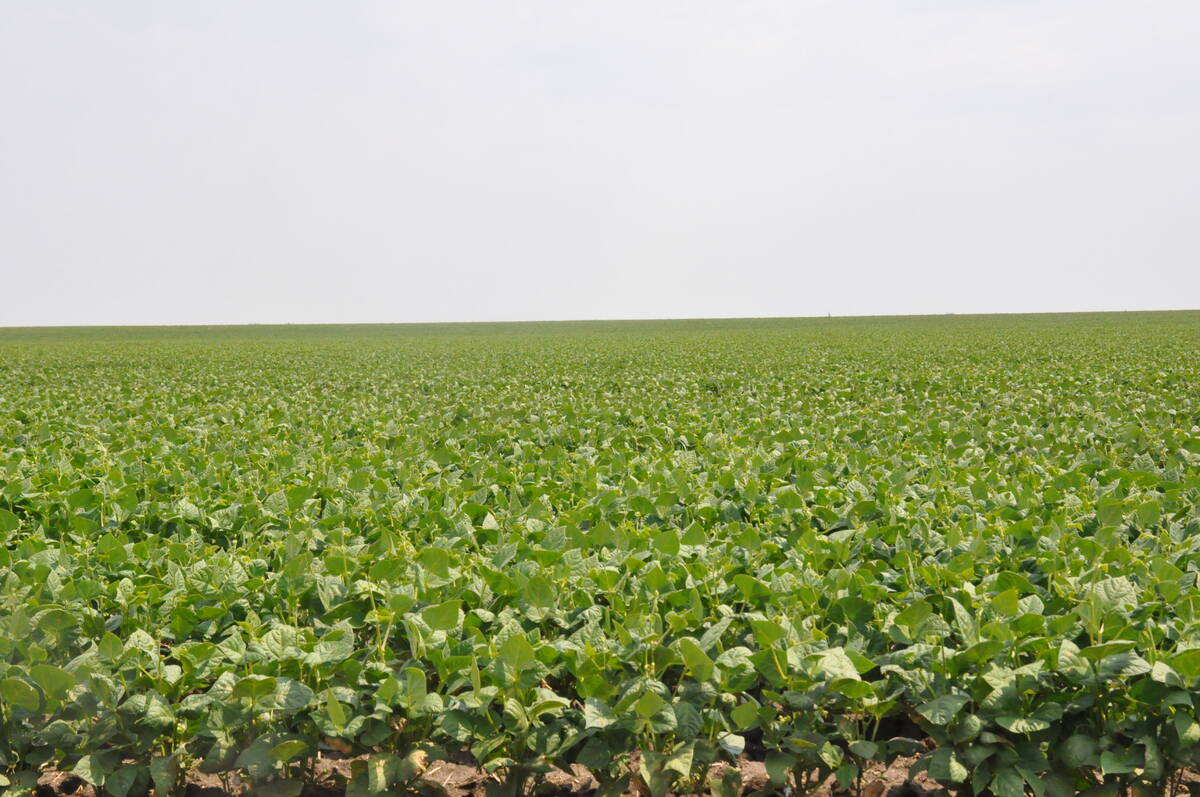KOMARNO, Man. – Betty Kehler is down on her knees, nose to beak with a
dozen yellow goslings, imprinting herself as their leader.
They will form an important part of her labour force weeding the rows
of strawberries at the Plum Ridge Farm in Manitoba’s Interlake district
near Komarno. Kehler and Bob Pizey grow everything from asparagus to
saskatoons.
The couple’s flock of 200 young geese will be sold in the fall, but now
are used to gobble up the grasses, dandelions, thistles and mustard
Read Also

Coloured bean production down, whites are up
Bean prices have been slumping and the outlook is for more of the same.
that can overwhelm strawberries.
“Geese suppress growth,” said Pizey. “They don’t eat everything, so you
hoe the rest.”
Damage to strawberry plants is minimal, but they will eat the fruit and
must be removed well before picking time.
Over the years, the geese’s workload has been greatly reduced as the
number of weeds has dwindled.
Kehler and Pizey both have “an organic bent,” although the farm is not
certified organic.
They raise lambs to mow the grass in the orchards.
They cultivate before the weeds are above ground, which also helps keep
salinity problems at bay. This month, they managed to plant a couple
acres of strawberries with the help of a planting machine just before a
wet snow hit in mid-May.
They use composting to increase phosphorus. The soil is covered with a
one-third turkey manure and two-thirds cow manure compost and wheat
straw for the winter. They irrigate the plants sporadically, usually
just as a cover to ward off frost or to cool plants on a hot July day.
The unique features of their fencing direct the snow, allowing a more
even covering through winter. Shelterbelts also surround the gardens to
add more protection.
Kehler said they switched from chicken wire to page wire, as the
cheaper product required more maintenance. The fence surrounds the
fields, keeping their gardens and geese safe from predators.
They prune trees from the bottom up to allow air to dry plants and for
frost drainage.
They avoid chemicals, controlling insects with insecticidal soaps and
managing fungus with a sugar spray. That feeds organisms that live on
the surface of the plant, Pizey explained.
“You’re building up populations of beneficial organisms on the surface
of strawberries that will defend strawberries against rots.”
That works best in drier conditions: “If it rains too much, it’s down
the tube.”
Kehler grew up on a grain farm near Altona, while Pizey cut his farming
teeth here, buying and equipping the farm in the mid-1970s from money
saved from operating a backhoe in the city.
He bought the former wheat farm and an arrangement of ramshackle
buildings for $20,000, an amount he now considers too high for the
heavily treed area just west of Lake Winnipeg’s cottage country.
“Since it had been cleared, it had been mined,” he said of the farm.
The pair met at a strawberry growers seminar, where both came to learn
more about horticulture. Kehler had worked on various farms and found
Pizey’s farm, at first blush, “disorganized and disheveled,” she said.
Kehler had returned to the University of Manitoba agricultural school
after traveling the world. That followed a “tough job” as a social
worker working with emotionally disturbed children in Ontario.
She said horticulture is a calling, noting it takes the two of them and
a handful of hired help to make their pre-pick and U-pick business work.
They started small, paying off loans before buying more equipment.
The spacious post and beam house now being completed is the result of
the couple putting aside $1,000 a year since coming here.
Pizey designed and built the house, milling the rough lumber in his
on-farm shop. They have incorporated large recycled windows and post
carvings from their annual treks to Mexico into the home’s design.
The couple said they were blessed with seven good years when they first
started farming. They went into the second season with a $29,000
investment used to plant and pump water.
“The next year, we got cash flow,” he said.
Markets are half what they were 20 years ago when they started, as more
people have added strawberries in the region. There are also fewer
buying large volumes, as canning is in decline.
“This once was the only game in town,” Kehler said.
They have responded by growing as much as they can sell. They draw on
loyal local customers but also from those at nearby beaches. Much of
their produce can be found in organic stores in Winnipeg.
“The size of our patch is proportionate to our market,” said Pizey. “We
don’t plant any to the horizon but feel our way through it.”
They chose to live a frugal lifestyle and having no children has also
guided their course. They heat their home with wood and eat what they
grow.
Their original 480-square-foot cottage will remain a part of their new
home and be used for storage and guest rooms.
They have sold shrubs and spruce trees, made juice and wine and turned
goose feathers into socks and clothing.
“We can make enough off the farm to keep on plugging,” Pizey said.
“Farming allows you to find out different things about your personality
you never knew you had,” said Kehler.
Now in their 50s, the pair is scaling back their farming operation and
looking to Pizey’s wood shop and mill as a way to sustain their
lifestyle.
“You think of doing less and doing what you can do better,” said Kehler.














